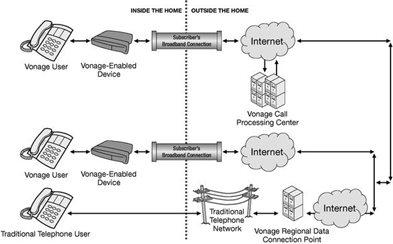Vonage IPO filing describes E911 chamber of horrors


I've spent a good bit of the last couple of days reading every word of the Vonage IPO filing.
Keeping in mind that it is the legal and fiduciary duty of companies that file Initial Public Offering paperwork with the Securities and Exchange Commission to articulate all risks to potential shareholders, there's a section on Vonage's E911 that really jumps out at me.
The public voice of Vonage is that they are well on their way toward getting E911 licked. And I have to tell you that not a week goes by that I receive a p.r. pitch from a company that claims to have "solved" E911 for their customers. Or read a clueless article in the mainstream media that makes a similar assertion.
I have blogged here quite often that E911 will not be fixed until true nomadic VoIP is achieved. I am talking about the ability of an emergency services dispatcher to see where you are calling from, even if you haven't let your VoIP services provider know where you are.
So let us now go to the section of the SEC filing in which Vonage tells a different story about their E911 capability than is being reflected in their press releases:
Our basic emergency and new E−911 calling services are more limited than those offered by traditional wireline telephone companies and may expose us to significant liability.
Both our basic emergency calling service and our new E−911 calling service are more limited, in significant respects, than the emergency calling services offered by traditional wireline telephone companies. In each case, those differences may cause significant delays, or even failures, in callers' receipt of the emergency assistance they need.
Traditional wireline telephone companies route emergency calls over a dedicated infrastructure directly to an emergency services dispatcher at the public safety answering point, or PSAP, in the caller's area. Generally, the dispatcher automatically receives the caller's phone number and actual location information.
While our new E−911 service being deployed in the United States is designed to route calls in a fashion similar to traditional wireline services, our new E−911 capabilities are not yet available in all locations.
Pay attention to this next point, readers. It really proves what I have been saying here all along about the illusion of VoiP E911. Unless the dispatcher can tell exactly where you are, it's not really E911 in its most efficient form.
Back to the filing:
In addition, the only location information that our E−911 service can transmit to a dispatcher at a PSAP is the call because customers can use their Vonage−enabled devices to make calls almost anywhere a broadband connection is available. In such cases, as described below, we offer customers alternative access to emergency services.
Every time the customer moves his or her Vonage−enabled device to a new location, the customer's registered location information must be updated and verified. Until that takes place, the customer will have to verbally advise the emergency dispatcher of his or her actual location at the time of the call and wait for the call to be transferred, if possible, to the appropriate local emergency response center before emergency assistance can be dispatched.
If this happens, bad things can come down. Vonage knows this, and so do their lawyers.
Back to the filing once again:
Delays our customers encounter when making E−911 or basic 911 calls and any inability of the answering point to automatically recognize the caller's location or telephone number can have devastating consequences.
Customers have attempted, and may in the future attempt, to hold us responsible for any loss,damage, personal injury or death suffered as a result. Some traditional phone companies also may be unable to provide the precise location or the caller's telephone number when their customers place emergency calls.
However, while we are not covered by legislation exempting us from liability for failures of our emergency calling services, traditional phone companies are covered. This liability could be significant. In addition, we have lost, and may in the future lose, existing and prospective customers because of the limitations inherent in our emergency calling services. Any of these factors could cause us to lose revenues, incur greater expenses or cause our reputation or financial results to suffer.
Now, are you still willing to think that VoIP has E911 solved- or is even well on the way toward doing so?